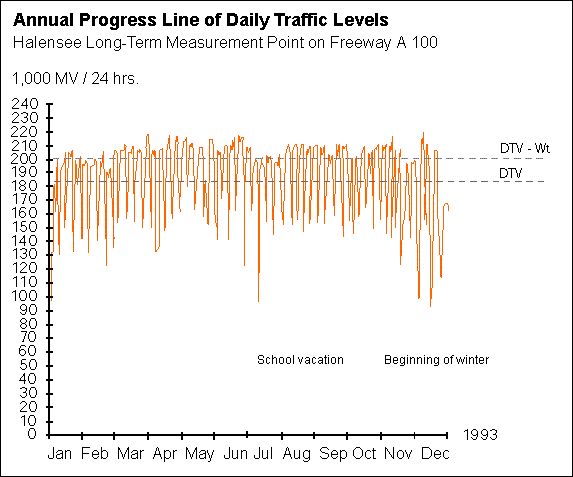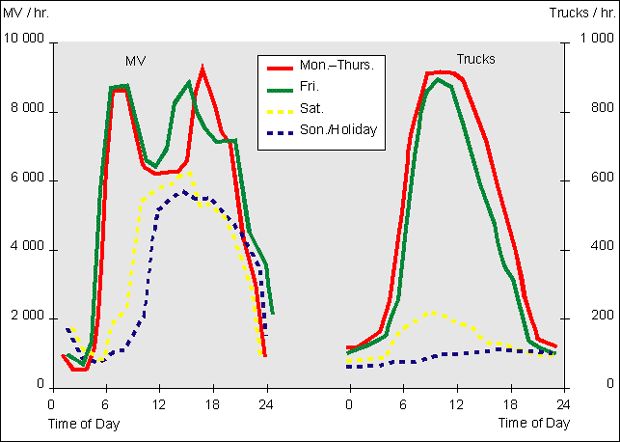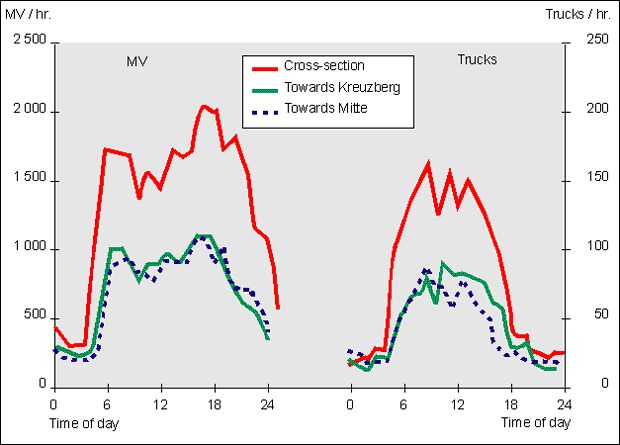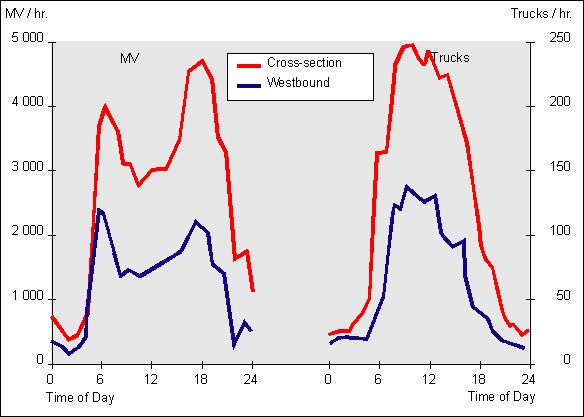Short-term (four-hour) counts were undertaken at approx. 360 measurement points. Because of the hourly fluctuations of the traffic flow for a day, a separate projection factor was to be determined for each distance from available 12-hours counts at continuously registering long-term measurement points, with which the count data could then be projected to the 12-hours traffic level (7 AM to 7 PM).
To also account, over and above this, for the seasonal fluctuation in motor-vehicle traffic through the effects of weather and vacation periods, the 12-hour data were subsequently multiplied by week factors, which were likewise ascertained at the automatic long-term measurement points.
As the last step, the projection to 24-hours values, separately by DTV-Wt and by DTV, was then still necessary.
Construction point situations are not specially marked. Particularly in the eastern boroughs, various construction points and detours existed during the counts. Since the counts were carried out over several years, the traffic volume was adjusted to a uniform traffic-network situation.
A clear increase in traffic volume can be ascertained in comparison with the 1985 Umweltatlas. The differentiation into traffic-volume categories therefore had to be reduced in the lower range. The inner-city highways provide clear examples for increased traffic volumes.
On some road segments, the directional lanes are spatially separate. This is the case, for example, for the freeway segment near the International Congress Center (ICC), and for the canal-shoreline roads in Kreuzberg. On the map, the different directional lanes may be shown in different colors for these segments than would be the case if, as with other streets, they were shown as the sum of both directional lanes.




